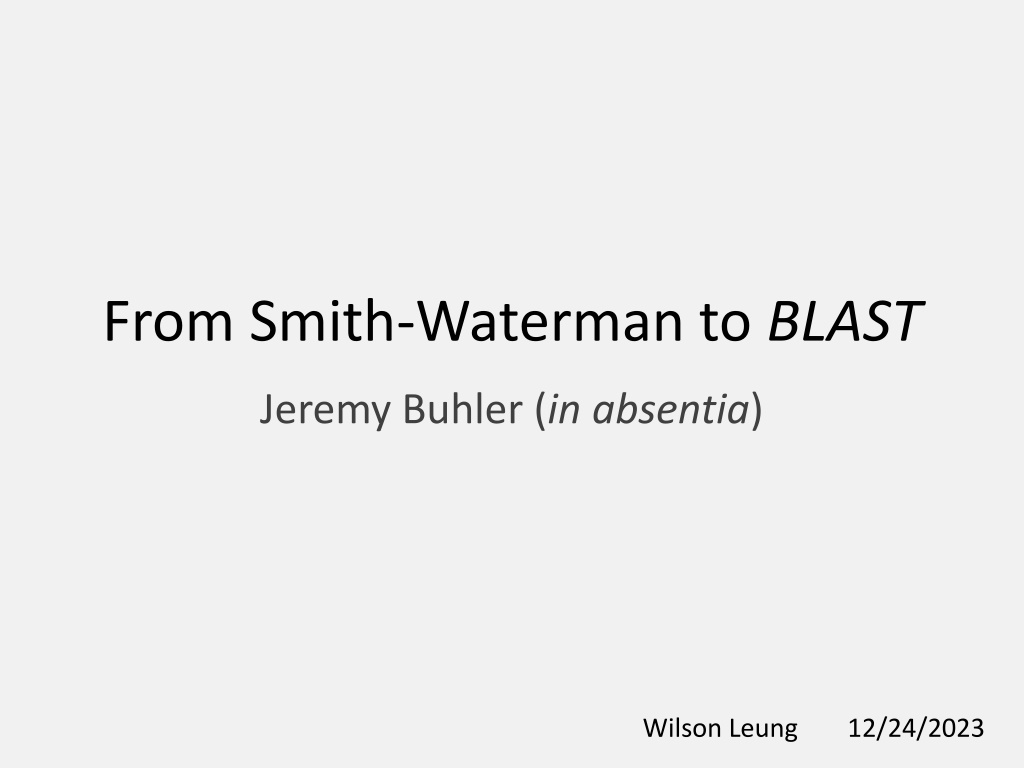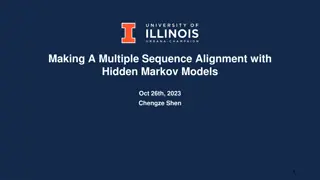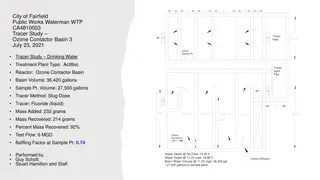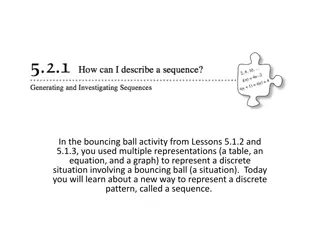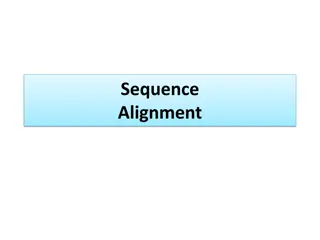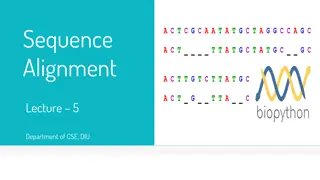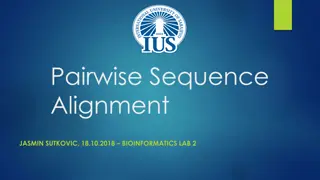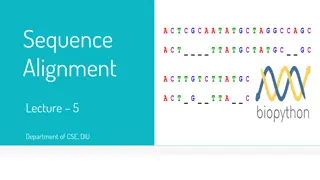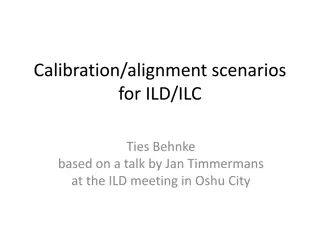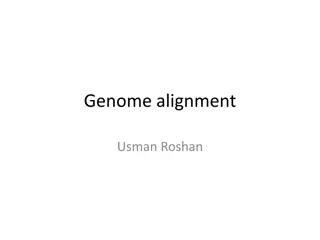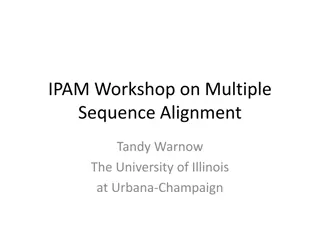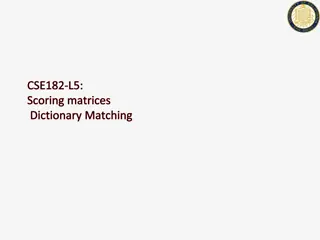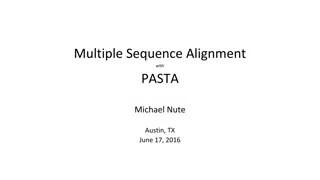Evolution of Sequence Alignment: From Smith-Waterman to BLAST
Delve into the progression of sequence alignment algorithms, from the foundational Smith-Waterman method with its limitations to the efficient filtering strategy employed by BLAST. Discover the challenges faced and solutions adopted in aligning biological sequences for genomic analysis.
Download Presentation

Please find below an Image/Link to download the presentation.
The content on the website is provided AS IS for your information and personal use only. It may not be sold, licensed, or shared on other websites without obtaining consent from the author. Download presentation by click this link. If you encounter any issues during the download, it is possible that the publisher has removed the file from their server.
E N D
Presentation Transcript
From Smith-Waterman to BLAST Jeremy Buhler (in absentia) Wilson Leung 12/24/2023
Key limitations of the Smith-Waterman local alignment algorithm Quadratic in time and space complexity Report only one optimal alignment Usually want all interesting alignments Example: map a mRNA against a genome Query sequence Query Paralogous features in genome Genome
Smith-Waterman implementations Bill Pearson s ssearch https://fasta.bioch.virginia.edu/fasta_www2/fasta_list2.shtml Water (EBI / EMBOSS) https://www.ebi.ac.uk/jdispatcher/psa/emboss_water Hardware solutions: Graphical Processing Units (GPUs) Field-Programmable Gate Arrays (FPGAs) Oliveira FF, Dias LA, Fernandes MAC. Proposal of Smith-Waterman algorithm on FPGA to accelerate the forward and backtracking steps. PLoS One. 2022 Jun 30;17(6):e0254736.
BLAST alignment strategy: generate and filter Initial candidates Refined candidates Final Alignments Smith-Waterman Filtering Query Database Goal: minimize the need for calculating Smith-Waterman alignments
Challenges with the BLAST alignment strategy 1. Identify candidate patterns 2. Find the best alignment near a candidate
Identify candidate patterns High-scoring alignment between two sequences will contain some consecutive matches Treat k-mer (word) matches as candidates atacatcactacgatcc-a agacatg--tgcaatccca acat acat atcc atcc (k = 4)
Locate k-mer matches (k=3) 1 2 3 4 5 6 7 a c g t a c g Query: 3-mers in query 3-mer matches in database 1 2 3 4 5 6 7 3-mer acg cgt gta tac Position(s) 1 2 a c g c g t a , 5 k-mer match acg cgt Database position(s) 1 4 Query position(s) 1, 5 2 3 4 gta 5 3
Use a hash table to more efficiently store k-mers A table of 4k entries is required to store all possible k-mers of a DNA query sequence BLAST uses a hash table to store k-mers Space requirement proportional to the query size Reduces the time required to the sum of the lengths of the two sequences
Other Build a Table abstractions Search multiple queries against a database BLAT: index the database More space-efficient index structures Suffix array Burrows-Wheeler transform FM-index Used by second-generation sequence aligners (e.g., BWA, Bowtie) Li H and Homer N. A survey of sequence alignment algorithms for next-generation sequencing. Briefings in Bioinformatics. 2010 Sep;11(5):473-83.
k-mer size affects the sensitivity and specificity of the search How good are the candidate matches? Trade off between sensitivity (true positives) and specificity (true negatives) k = 1 (high sensitivity) k = entire sequence (high specificity)
Quantifying specificity Given DNA sequences S and T i.i.d. random with equal base frequencies 1 4 Probability of 1 bp match: k 1 4 Probability of k-mer match: k |S | |T |1 Expected number of k-mer matches: 4 Search 1kb pattern against a 1Gb database: log410(3+9) 20bp
Quantifying sensitivity Require at least one k-mer match to detect an alignment between S and T Sequences with lower percent identity have fewer k-mer matches How large a value of k is likely to detect most alignments?
Word length versus probability of occurrence Target length (L) = 100 1.0 probability of occurrence (L = 100) 0.1 0.2 0.3 0.4 0.5 0.6 0.7 0.8 0.9 0 1 6 80% identity 67% identity 0.9 7 Probability of occurrence (L=100) 0.8 8 0.7 9 0.6 10 k=11 0.5 word length 0.4 11 12 0.3 13 0.2 67% identity 80% identity 14 0.1 15 6 7 8 9 10 Word length (k) 11 12 13 14 15 16 16
Adjust k-mer size based on the level of sequence similarity BLAT (k=15) Find highly similar sequences blastn (k=11) Find most medium to high similarity alignments Most candidates are false positives RepeatMasker (k=8) Find highly diverged repeat copies
Use more sensitive parameters to identify the initial transcribed exon Program Selection: From megablast to blastn Word Size: From 11 to 7 Match/Mismatch Scores: From +2/-3 to +1/-1 Gap Costs: Existence: from 5 to 2 Extension: from 2 to 1
Word match for protein sequences Use shorter k-mer: blastp (k=3) Allow approximate matches using similarity: Keep all word matches with score T (neighborhood) Reduce number of spurious candidates: Require two word matches along the same diagonal (two-hit algorithm)
Use dynamic programming (DP) to filter candidates Search the region surrounding each candidate Define the size and shape of the search region Report multiple high-scoring alignments Align a multi-exon mRNA against a genome Report alignments to all exons
The shadowing problem A good alignment might be omitted because of a better alignment within the search region Tandem duplication Missing exon Multi-exon gene A A A Query No similarity A Genome Genome Lower-scoring A is shadowed by higher-scoring A
Solution: pin the alignment Candidate match is centered on S[i], T[j] Compute optimal alignments that pass through (i, j) Half-anchor alignments Ab Sequence T (i, j) A Af = Best alignment that starts from (i, j) Af Ab = Best alignment that ends at (i, j) Sequence S A = Best alignment (combine Af and Ab)
Define the size of the two search regions One option: bound the search regions by the ends of the two sequences Best case: half of the entire DP matrix Worst case: cost as much as not filtering (i, j) DP fill region half of matrix
The chaining problem Opposite problem to shadowing Connect multiple features into a single alignment Sequence 2 Junk! Sequence 1 Sequence 1 Sequence 2 Feature A Feature B +40 -39 +40
BLAST often chains multiple alignment blocks into a single alignment tblastn of CaMKII-PA (query) against the D. mojavensis genome (subject) Mills LJ and Pearson WR. Adjusting scoring matrices to correct overextended alignments. Bioinformatics. 2013 Dec 1;29(23):3007-13.
Ignore alignments that are not promising Ignore alignments with very large gaps Usually have poor score Can identify second feature from its own candidates Limit search region to the diagonal surrounding the candidate The bandwidth (b) parameter controls the width of the diagonal
Use banded alignments to reduce the search space 2b+1 (i, j) Number of DP entries to compute is proportional to the length of the shorter sequence (times b)
Use X-drop to further reduce the search space Terminate the alignment if the score drops below x compared to the optimal score Mi*,j* = (i*, j*) Mu,v < - x (u, v) Af If total score of Afis , the score of this piece must be > x Minimum score?
BLAST X-drop strategy Final alignment Cumulative score X Trim back to position with the highest score Length of extension Korf, I., Yandell, M., and Bedell, J. (2003). BLAST. O Reilly Media, Inc.
Summary BLAST uses a generate and filter strategy Generate candidate matches Filter using dynamic programming (DP) Mitigates problems with shadowing and chaining Minimizes the amount of time spent on DP Banded alignment X-drop
(i,j) (i,j) > b > b (i ,j ) (i,j) (i,j) (i ,j ) b1 + b2 > b b1 b b2 > 2b (i ,j ) (i ,j ) Some alignments with |(j i ) (j i)| > b
